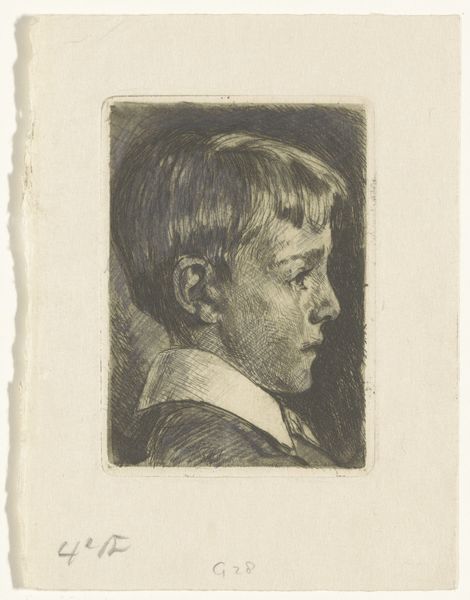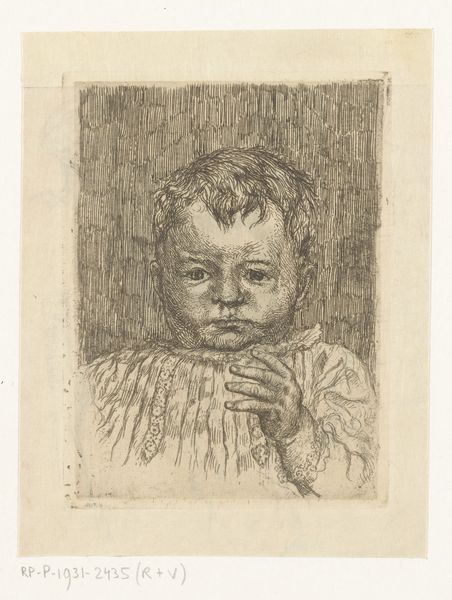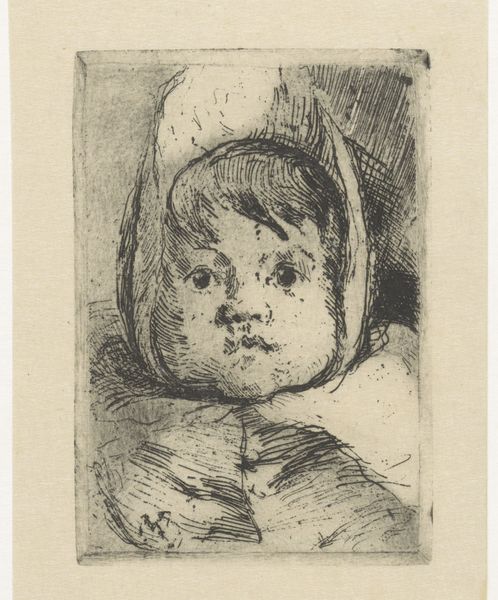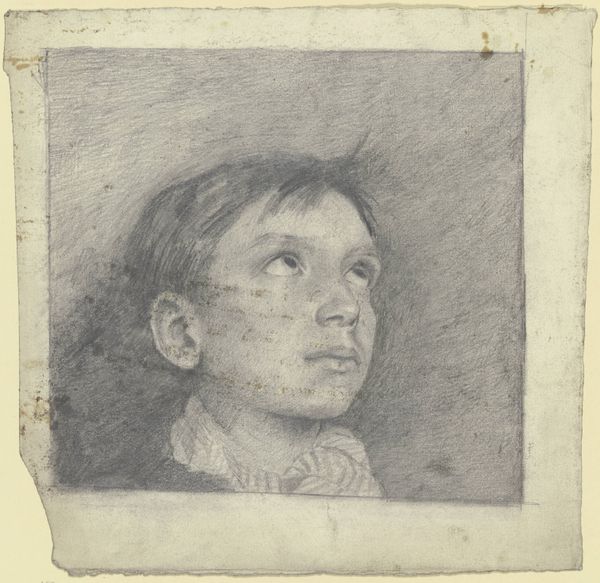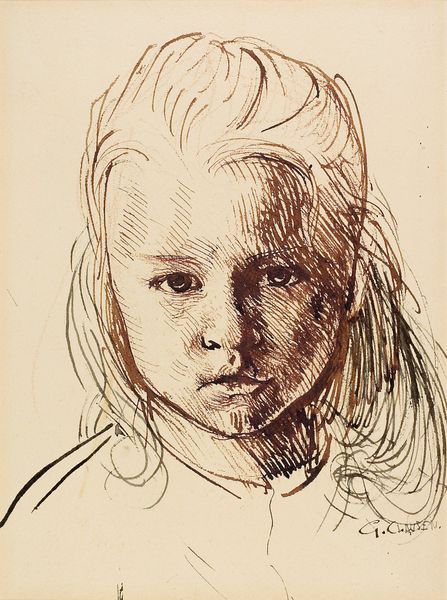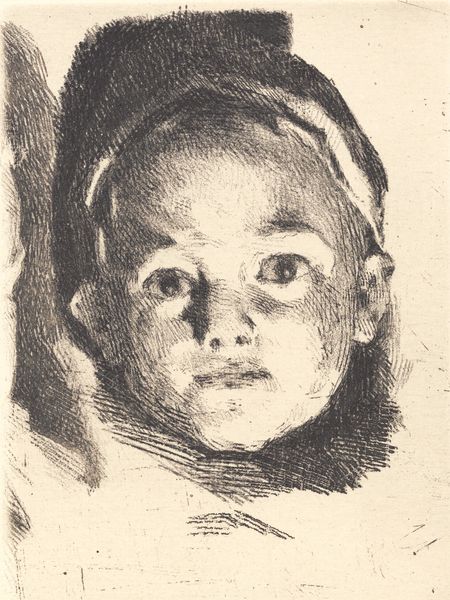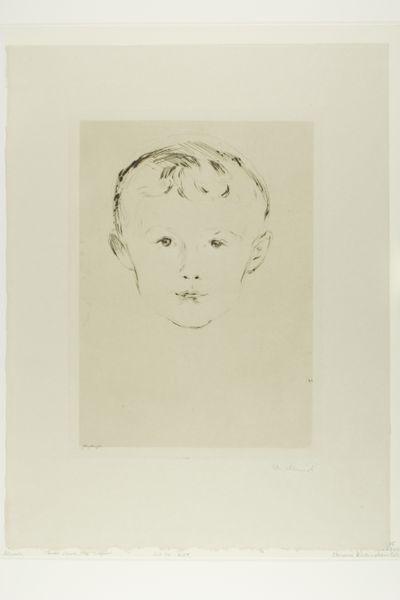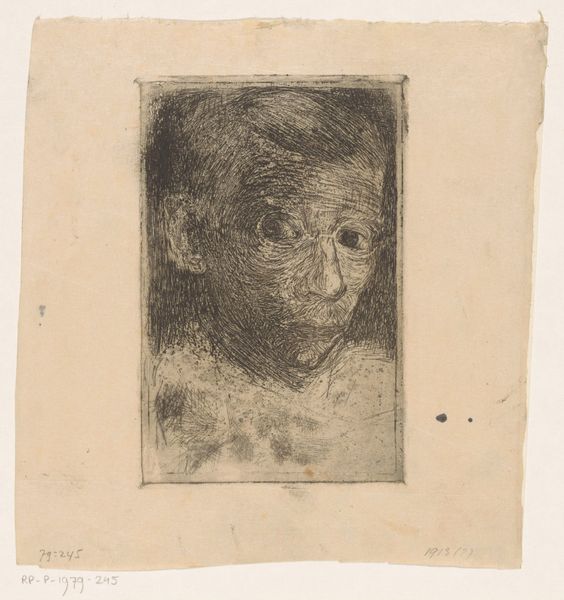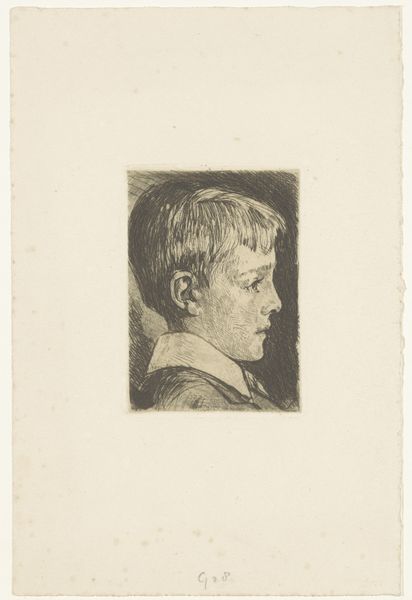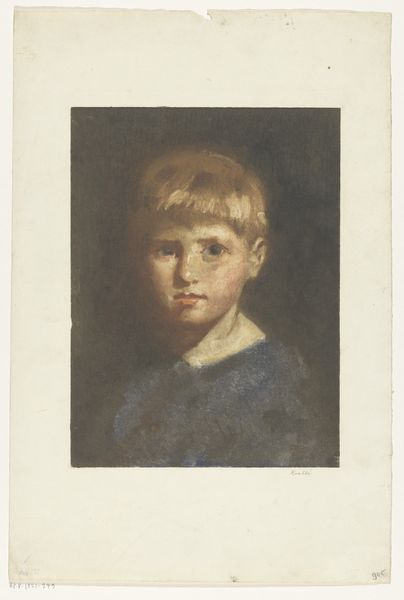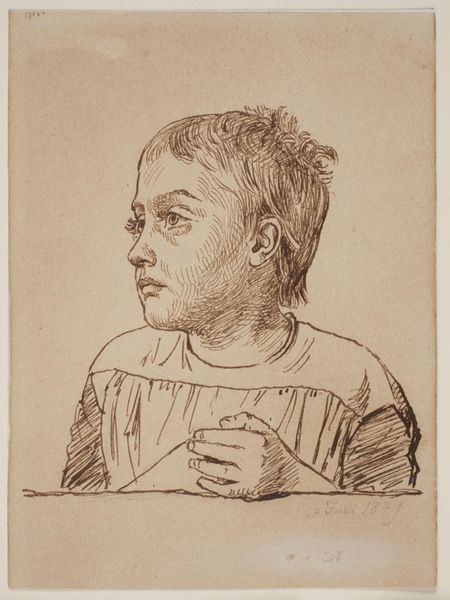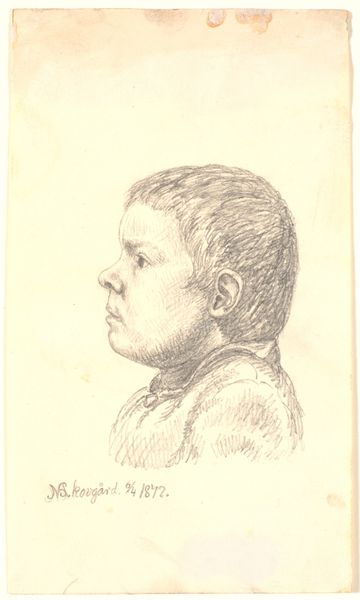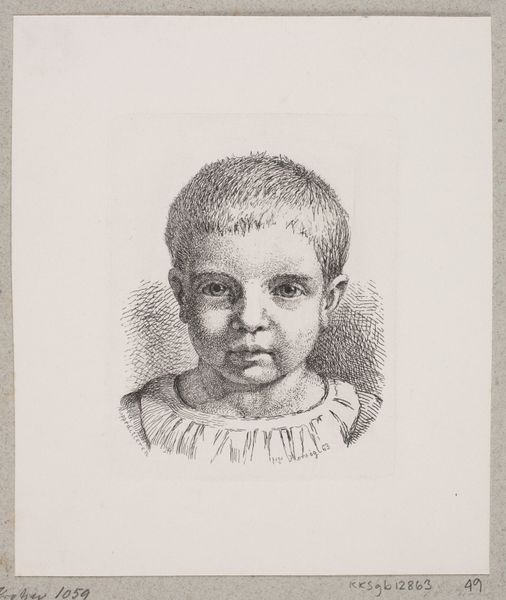
#
portrait
#
pencil drawn
# print
#
pencil sketch
#
pencil drawing
#
portrait drawing
#
realism
Dimensions: image: 6.99 × 5.56 cm (2 3/4 × 2 3/16 in.) sheet: 49.69 × 40.01 cm (19 9/16 × 15 3/4 in.)
Copyright: National Gallery of Art: CC0 1.0
Editor: This is "Head of a Boy," a print by Wilhelm Leibl from 1874. It's a small portrait, mostly in dark shades. The boy’s face seems shadowed and pensive. What do you see in this piece? Curator: The stark contrast immediately strikes me. Leibl uses light and shadow, almost chiaroscuro, to create a powerful emotional weight. It’s more than just a portrait; it’s an exploration of vulnerability, or perhaps, the burden of adulthood imposed too soon. Notice how the boy's face is divided; one side illuminated, the other obscured. Does that suggest a duality to you? Editor: It does. It’s like he's caught between innocence and experience. What symbols or ideas do you think Leibl was exploring? Curator: I see a study of the archetype of the child-as-vessel. The image taps into the enduring fascination with the perceived purity and potential inherent in youth, but also the encroaching realities they must face. The shadow might symbolize the societal expectations and personal struggles that inevitably shape us. This division could represent internal conflict or a future shaped by forces beyond his control. Do you agree? Editor: That's insightful. The shadow takes on new meaning. The simple, dark clothing seems to strip away any personal identifiers, turning the boy into a representation of all young people facing similar challenges. Curator: Exactly. And Leibl was working within the burgeoning realist movement, focusing on authentic, unidealized portrayals. The realism here isn’t just visual; it's psychological. It invites empathy. So, how does that impact your reading? Editor: It definitely makes the emotional impact much stronger. It is less about this specific boy and more about childhood itself. It feels more universal. Curator: Precisely. A successful and timeless portrait can resonate deeply, triggering reflections on our shared humanity. The symbolic weight is what elevates it. Editor: I’ll certainly look at portraiture differently after this. Curator: Excellent! Keep observing. Art offers endless depths, seen through time, in the reflections it inspires in us all.
Comments
No comments
Be the first to comment and join the conversation on the ultimate creative platform.
